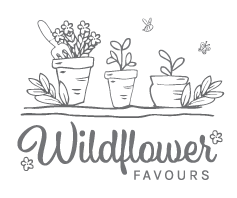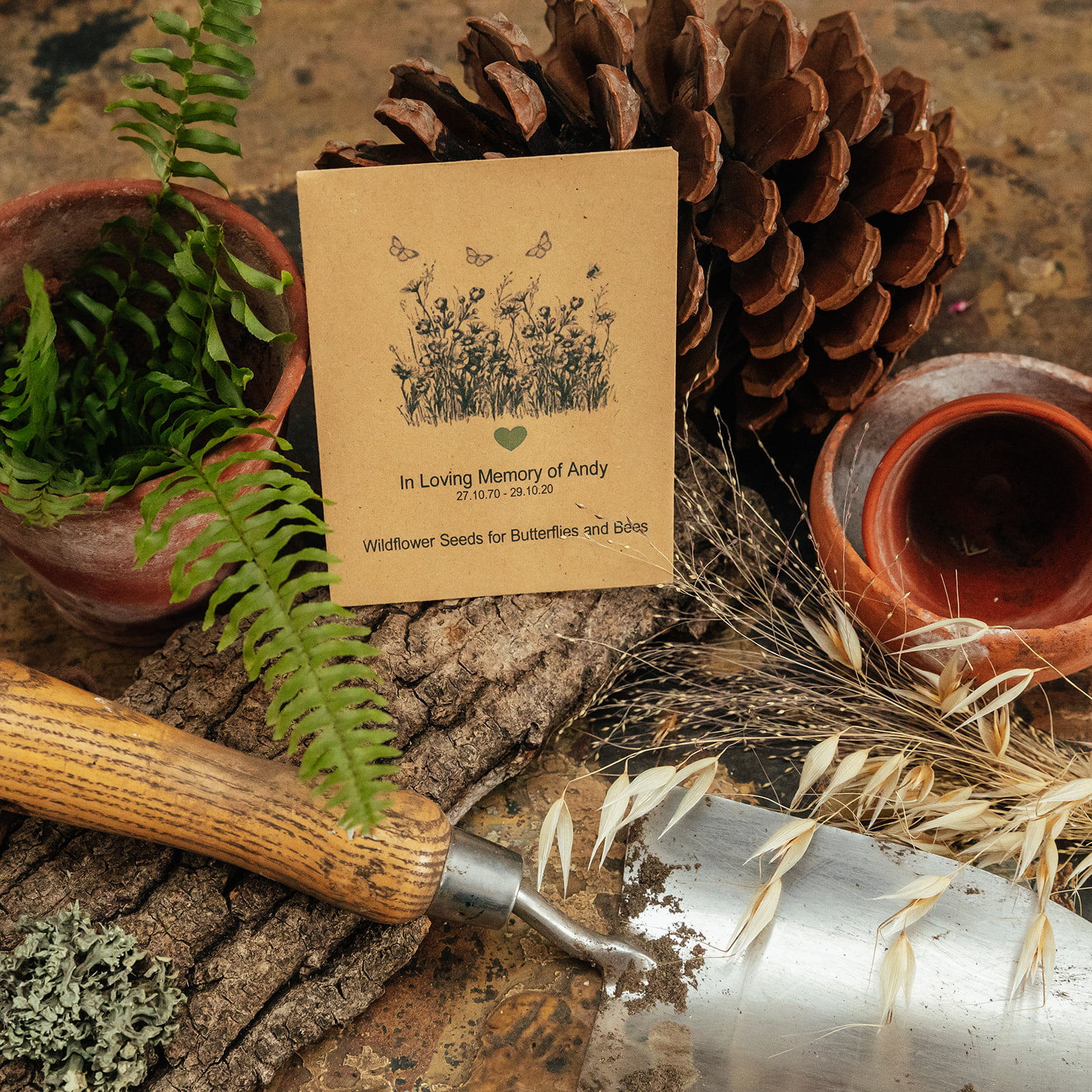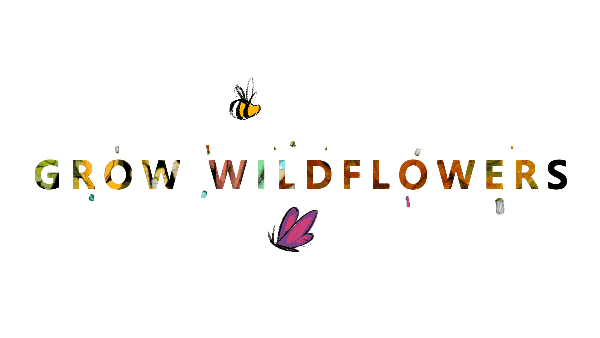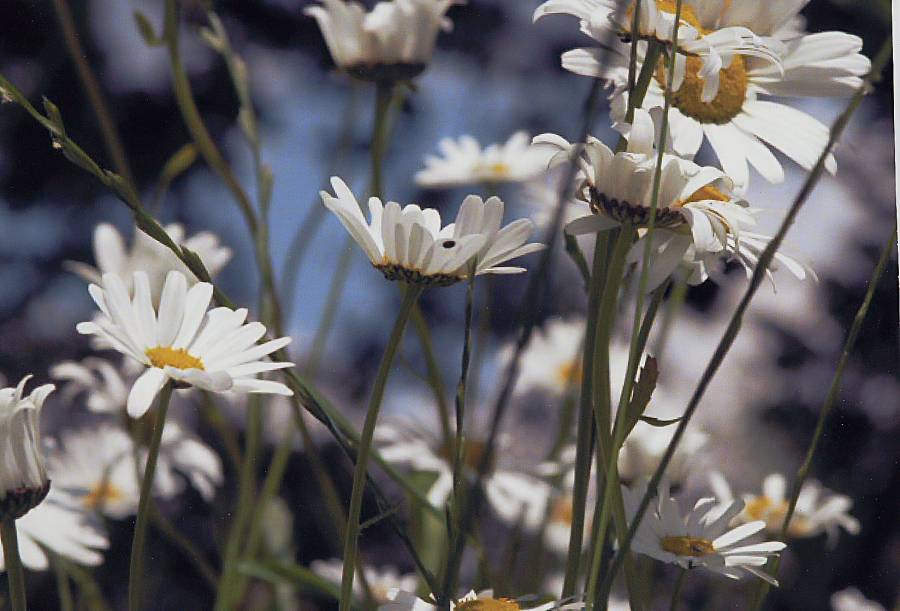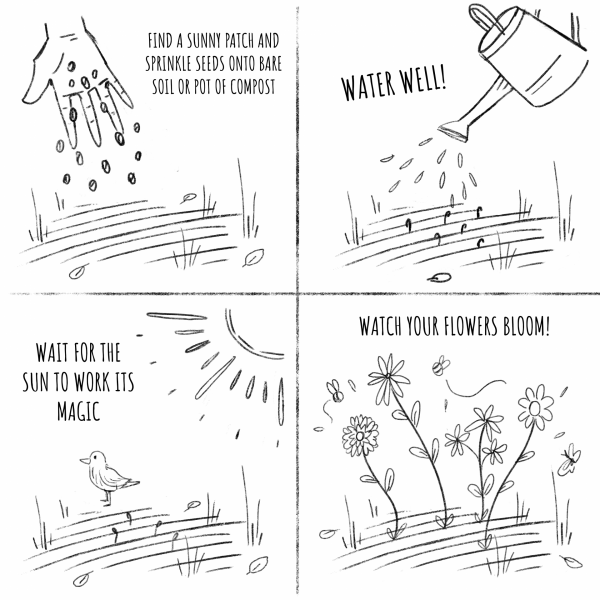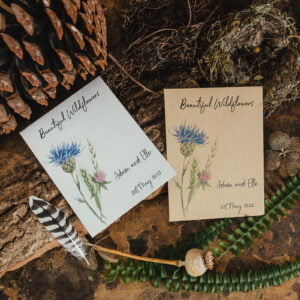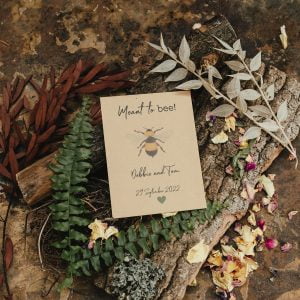Description
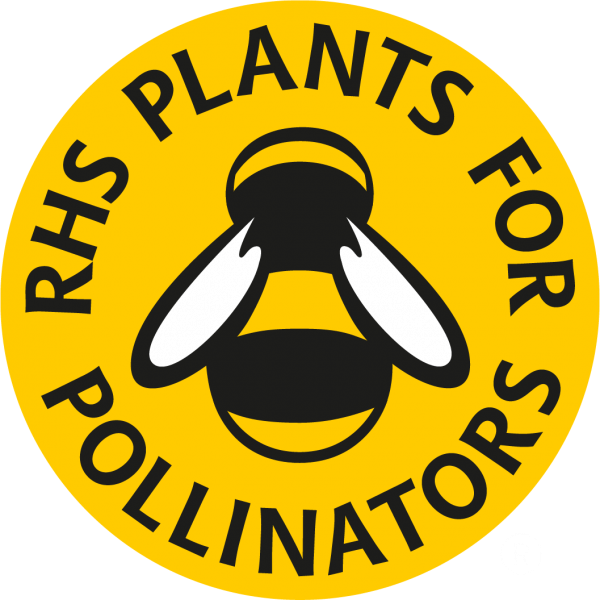 This dflower seeds for butterflies and bees memorial gift contains wildflower seeds that butterflies and bees love – Selfheal, Red Campion, Ox-eye Daisy and Musk Mallow. They are all British wildflower species and the seeds are grown in the UK too. They are inside the packet in a paper sachet, not a foil and plastic one. The packets are also personalised with your loved one’s details – please provide those in the box above.
This dflower seeds for butterflies and bees memorial gift contains wildflower seeds that butterflies and bees love – Selfheal, Red Campion, Ox-eye Daisy and Musk Mallow. They are all British wildflower species and the seeds are grown in the UK too. They are inside the packet in a paper sachet, not a foil and plastic one. The packets are also personalised with your loved one’s details – please provide those in the box above.
The seed packet measures 9 x 12 cm and is completely recycled and recyclable. The back of the packet is printed with the seed content and sowing instructions.
This is a lovely memorial gift for remembering your loved one, producing lovely flowers in the summer. A lovely way to help Nature too.
About the Seeds
Red Campion
 This pretty wildflower is found in semi shady areas in the wild, such as hedgerows and woodland margins. It produces a proliferation of dark pink flowers during late spring and sometimes longer – great value for money! As it is a prolific self-seeder, when the flowers have gone over it would be wise to cut off the seedheads unless, of course, you want loads more in your garden every year!
This pretty wildflower is found in semi shady areas in the wild, such as hedgerows and woodland margins. It produces a proliferation of dark pink flowers during late spring and sometimes longer – great value for money! As it is a prolific self-seeder, when the flowers have gone over it would be wise to cut off the seedheads unless, of course, you want loads more in your garden every year!
Latin name – silene dioica
Height – 90 cm
Habitat – semi-shade or sun
Perennial
Flowering time – May to September
Particular bees that love Red Campion – short-tongued bumblebees such as the garden bumblebee (bombus hortorum), due to the flower tube being quite small. Short-tongued bumblebees poke holes in the bottom of the flower tube to gain access to the nectar that is otherwise denied them! Savvy honeybees can also come along and try getting the nectar from the same hole! Long-horned bees (Eucera longicornis) have also bee seen visiting Red Campion, although this bee is a long-tongued solitary bee.
Female flowers have no pollen, male flowers do, so the bees can only collect pollen from the male flowers.
Selfheal
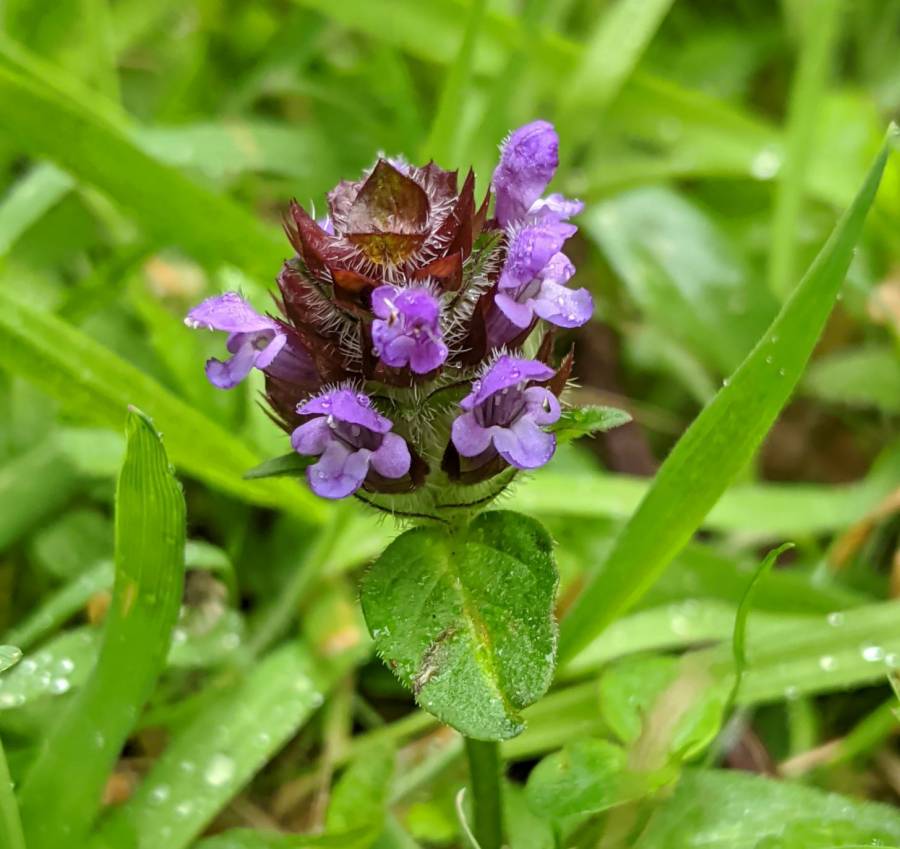 Selfheal is low-growing, often found in lawns and grassland, meadows and road verges in the wild, growing in patches of purple. In folk medicine it was thought that Selfheal was good for treating sore throats because its flower head resembles a throat. Also known as All-heal and Carpenter Herb, among many others.
Selfheal is low-growing, often found in lawns and grassland, meadows and road verges in the wild, growing in patches of purple. In folk medicine it was thought that Selfheal was good for treating sore throats because its flower head resembles a throat. Also known as All-heal and Carpenter Herb, among many others.
Latin name – prunella vulgaris
Height – 20 – 30 cm
Flowering time – June to October
Perennial
Habitat – sunny
Particular bees that love Selfheal – bumblebees and honeybees.
Musk Mallow
 Pretty pale pink flowers, often found in hedgerows, roadside verges and rough grassland.
Pretty pale pink flowers, often found in hedgerows, roadside verges and rough grassland.
Latin name – malva moschata
Height – 80 – 120 cm
Habitat – sunny or partial shade
Flowering time – June to September
Perennial
Habitat -sunny, semi-shade
Particular bees that like Musk Mallow – many bumblebee species like this wildflower, particularly the Red-tailed bumblebee (bombus lapidarius) and the common carder bee (bombus pascorum).
Photo is actually Common Mallow, but Musk Mallow is very similar and a pale pink! Just to give you an idea!
Ox-eye Daisy
As the name suggests, this wildflower has yellow and white daisy flowers – but these are bigger than your common lawn daisy! Very common on roadside verges, meadows and grassland. Another prolific self-seeder, if you leave the flowerheads on after flowering is over, you will have Ox-eye Daisies everywhere the following year! Hoverflies and beetles also particularly love Ox-eye Daisies!
Latin name – leucanthemum vulgare
Height – 60 cm
Perennial
Habitat – sunny
Flowering time – May to September
Particular bees that like Ox-eye Daisy – short-tongued bumblebees, solitary bees (such as mining bees – Andrena, Colletes and Halictus species) and some small black stem-nesting bees, such as Hylaeus species

